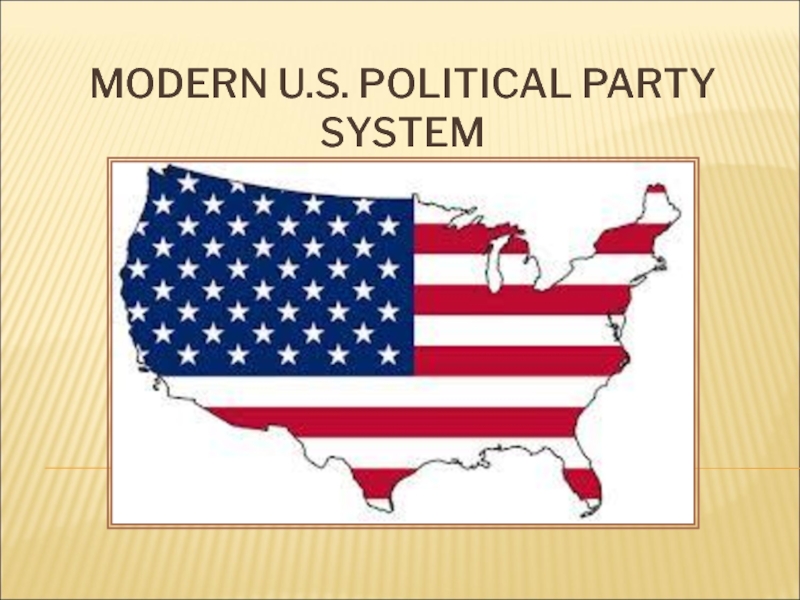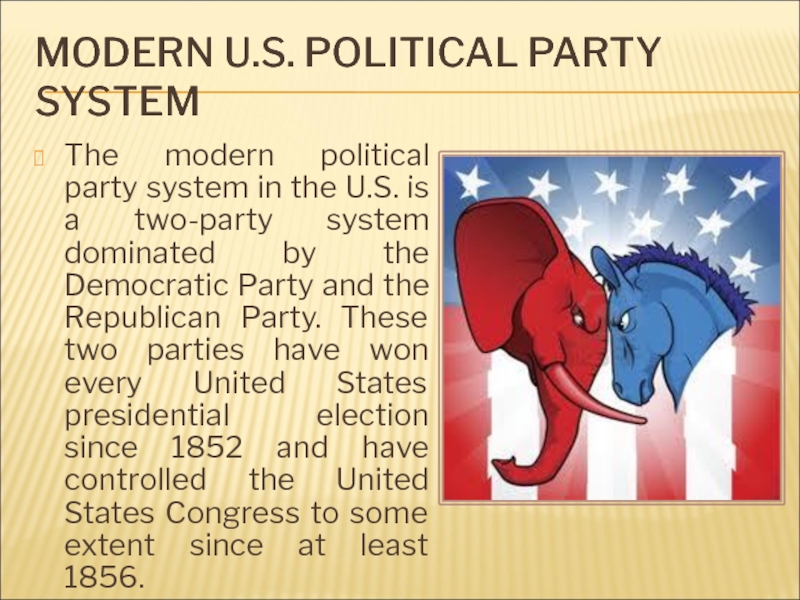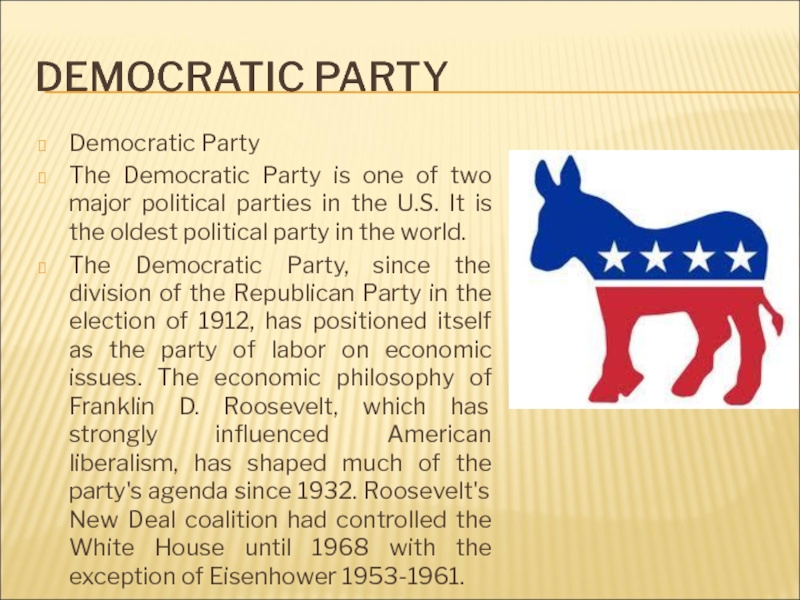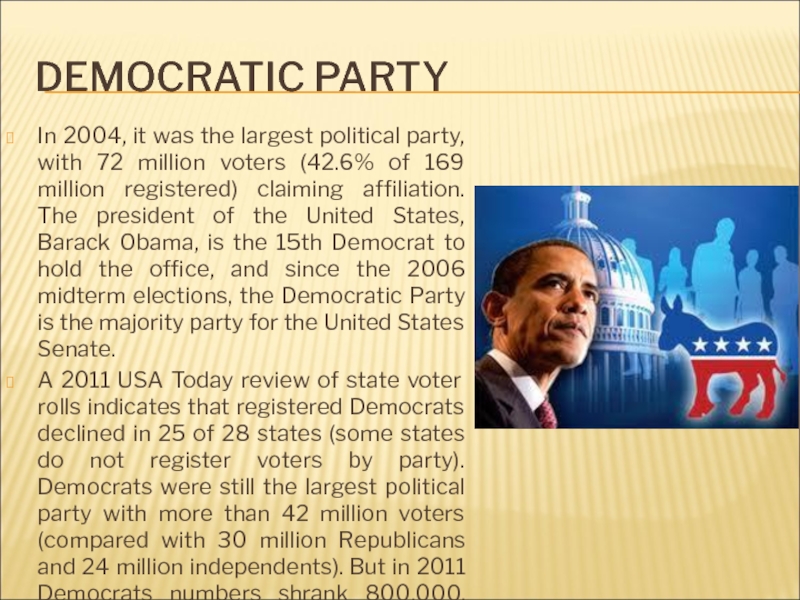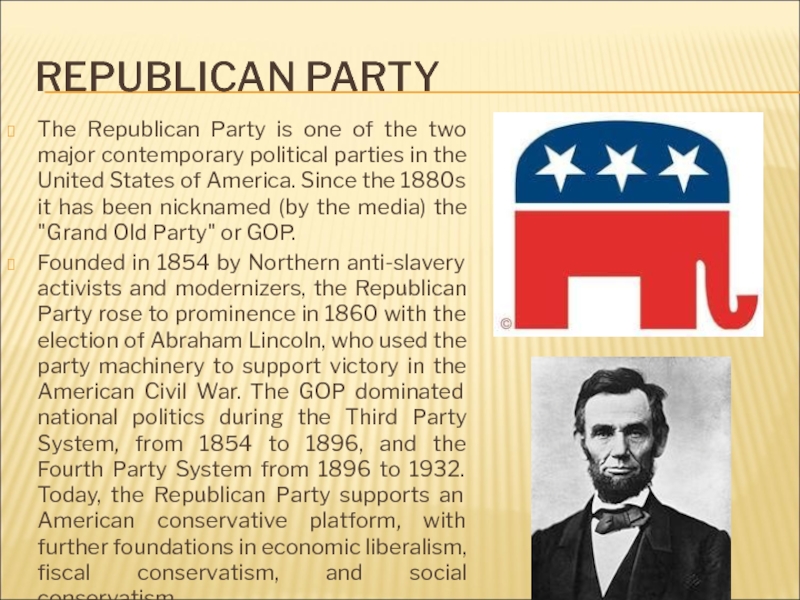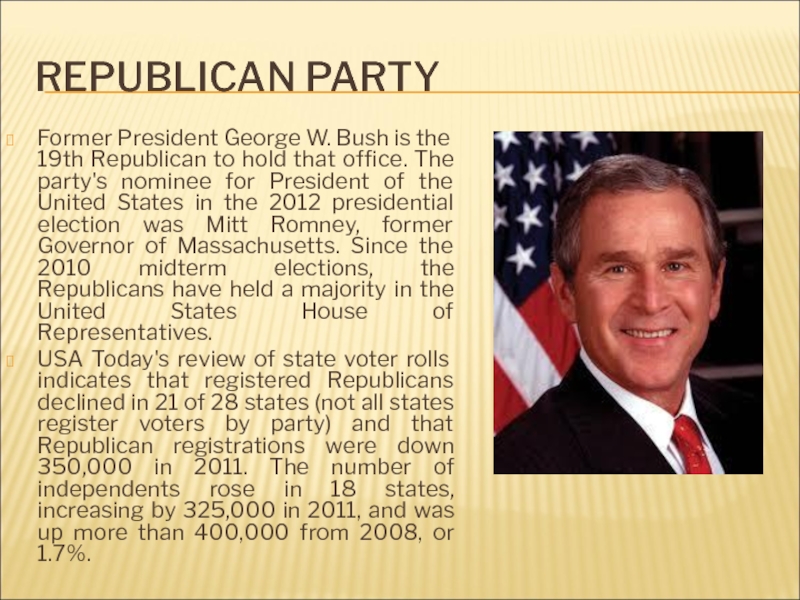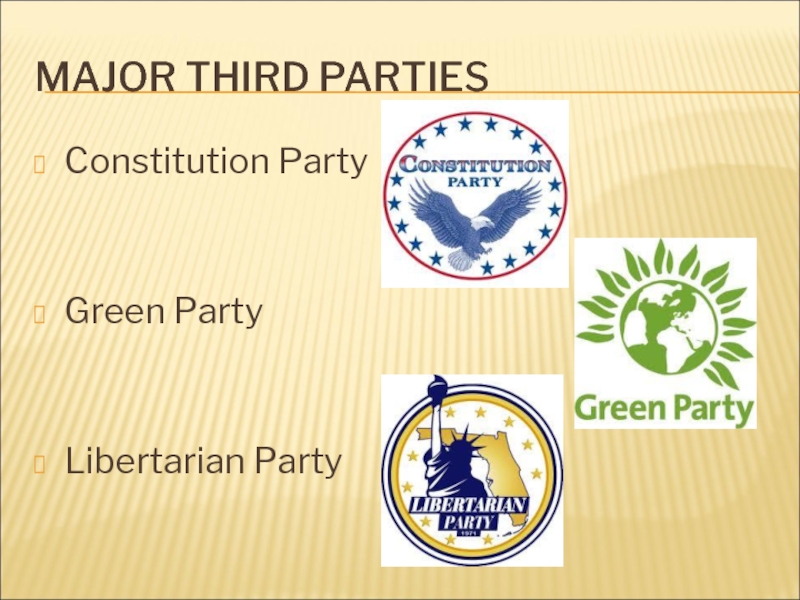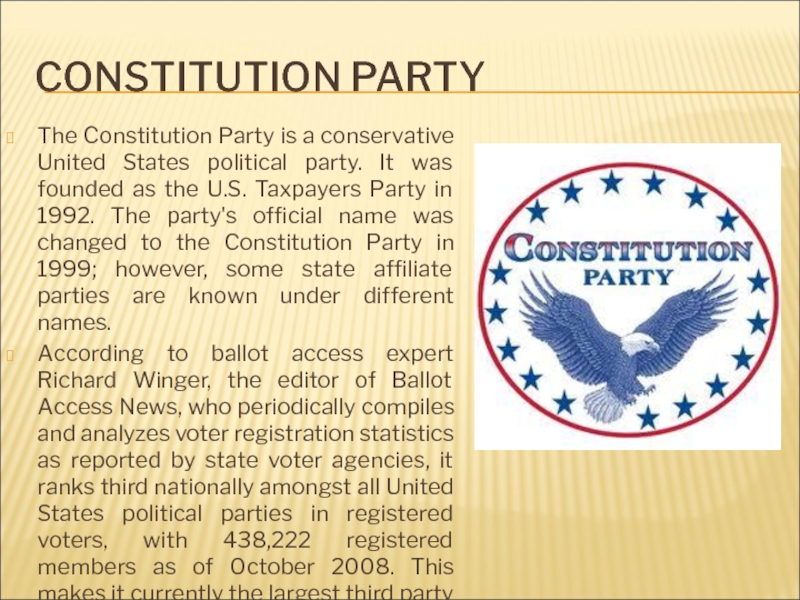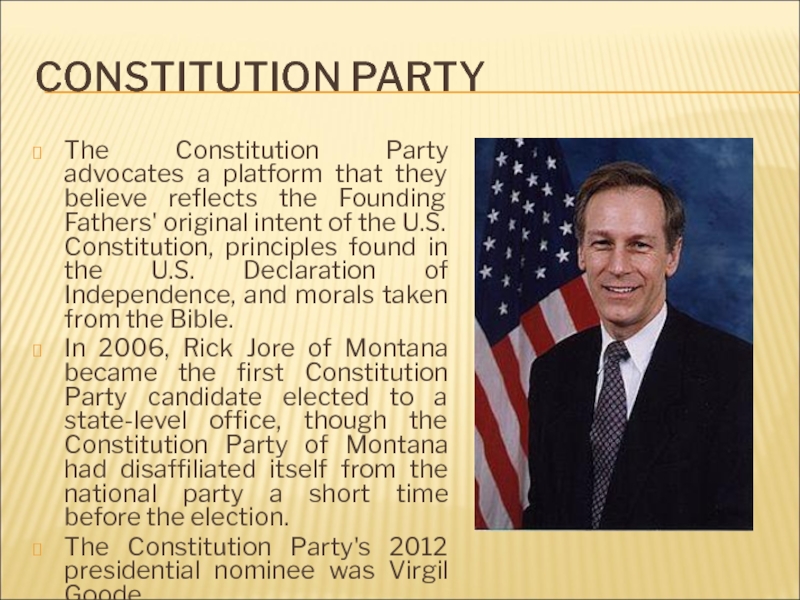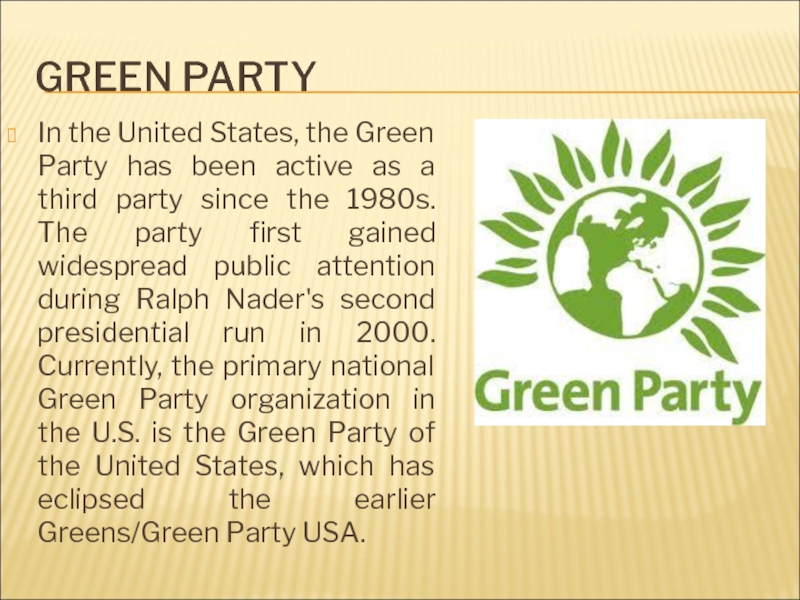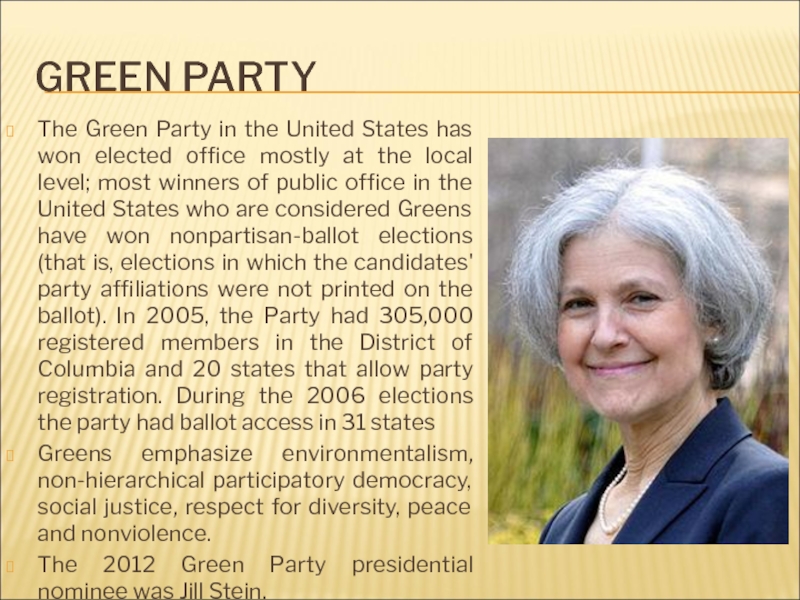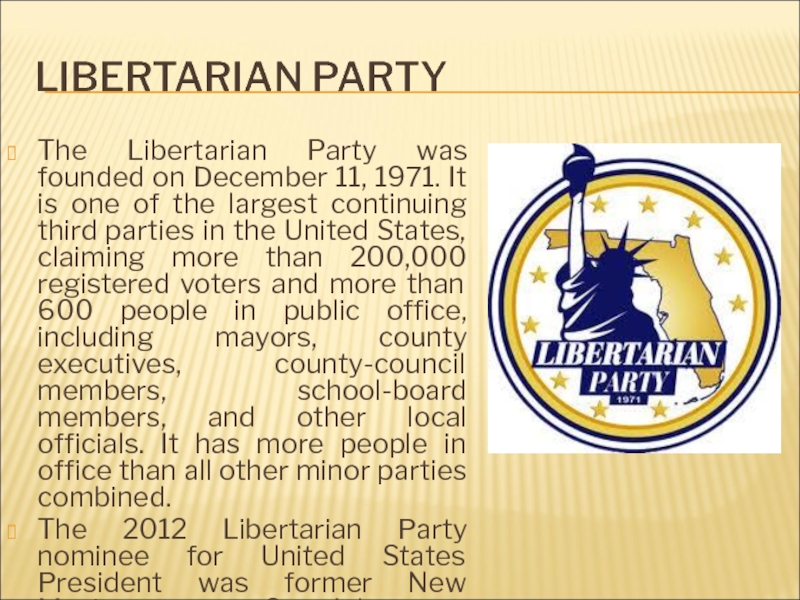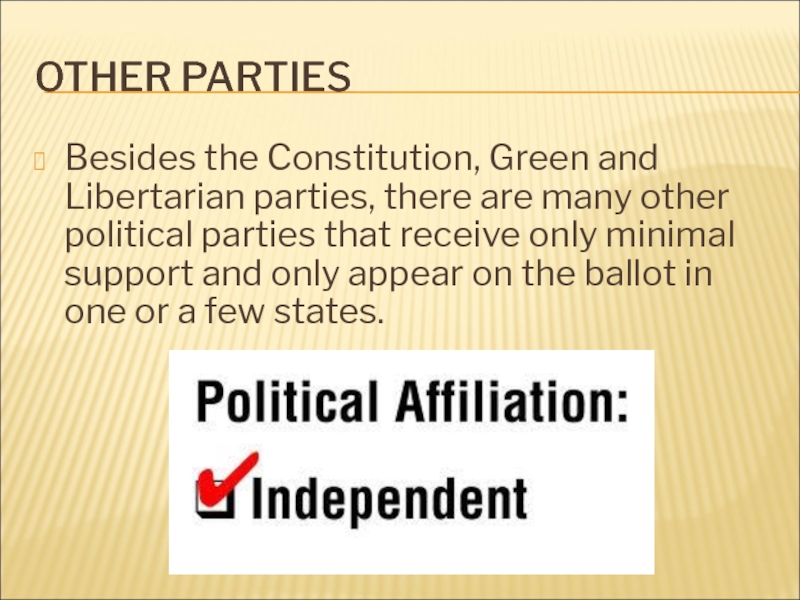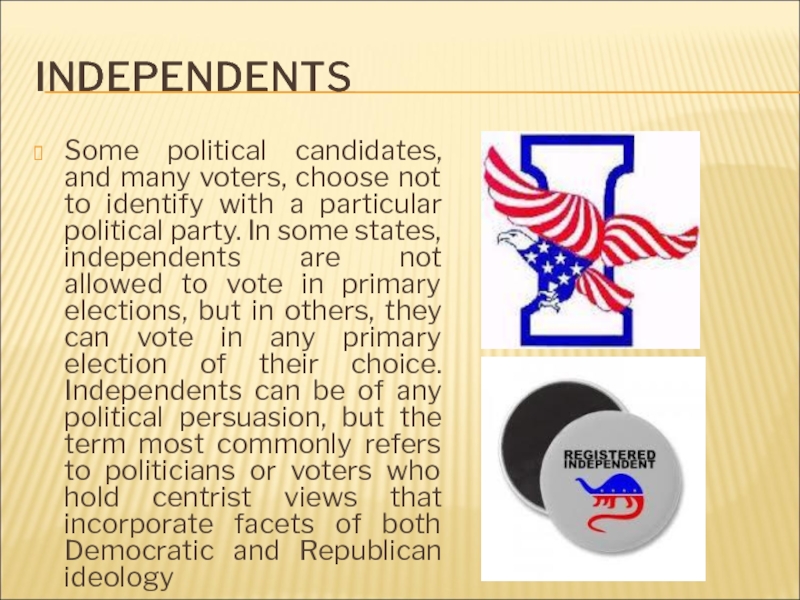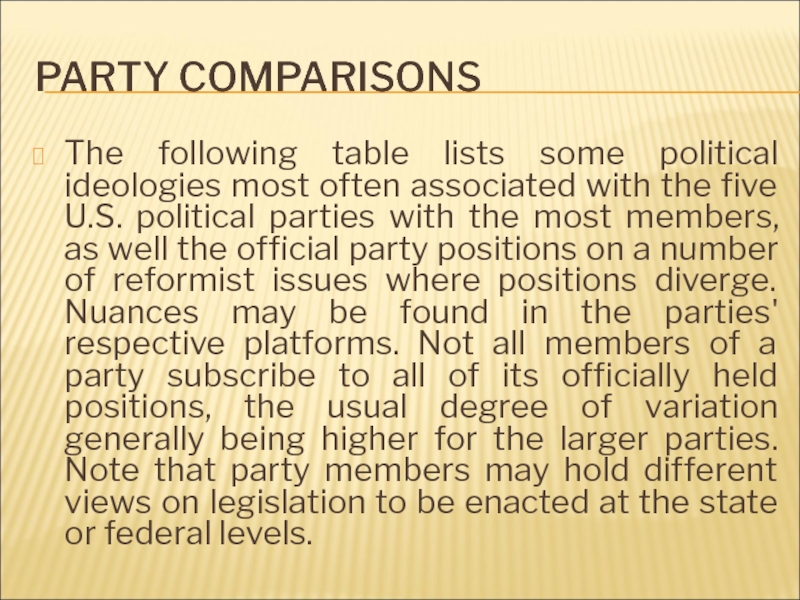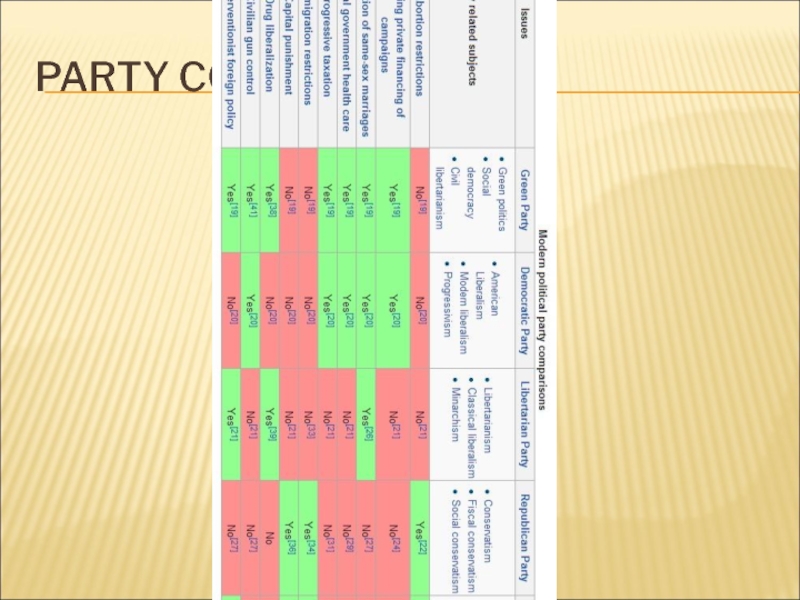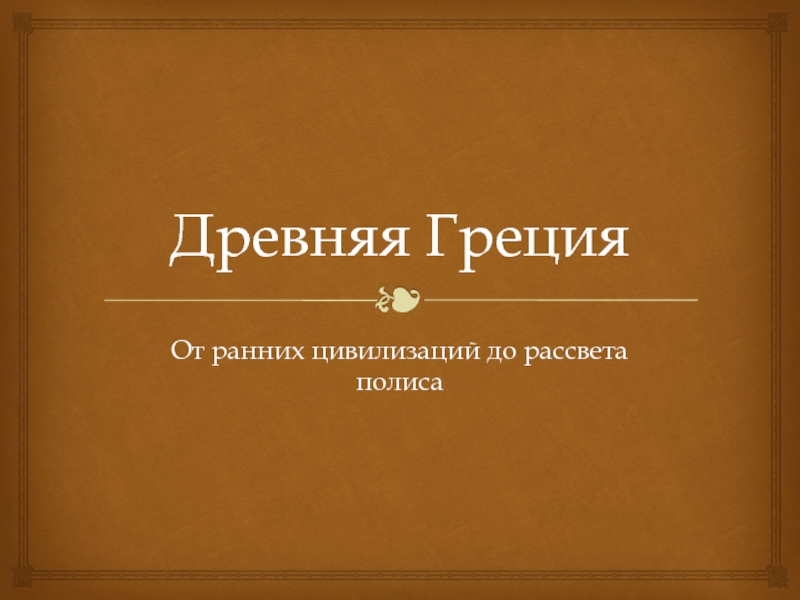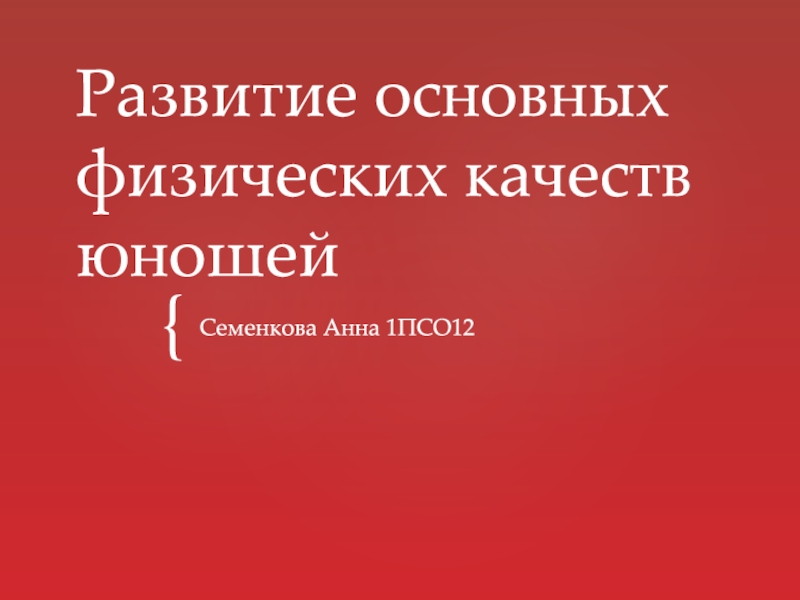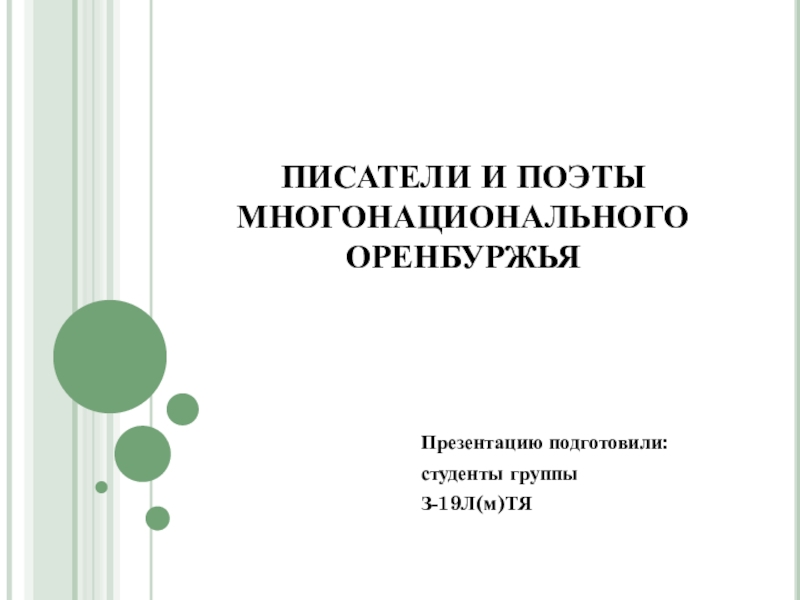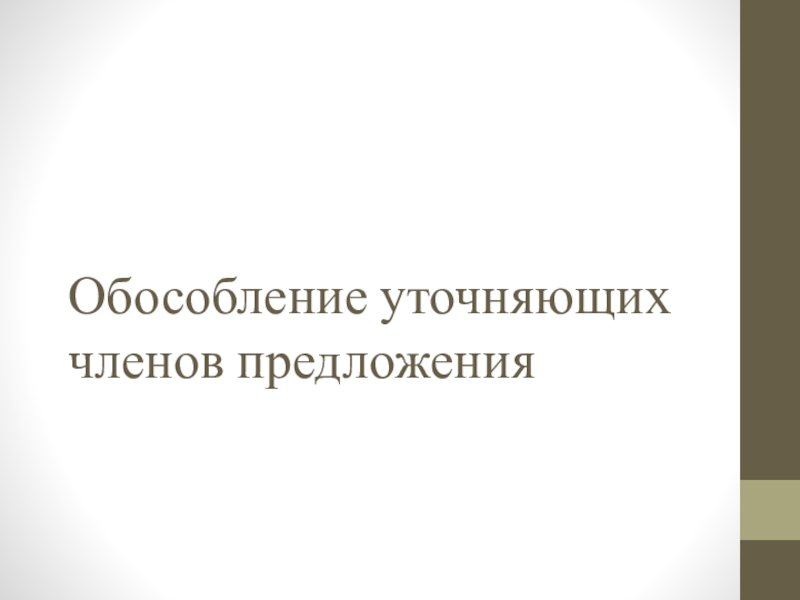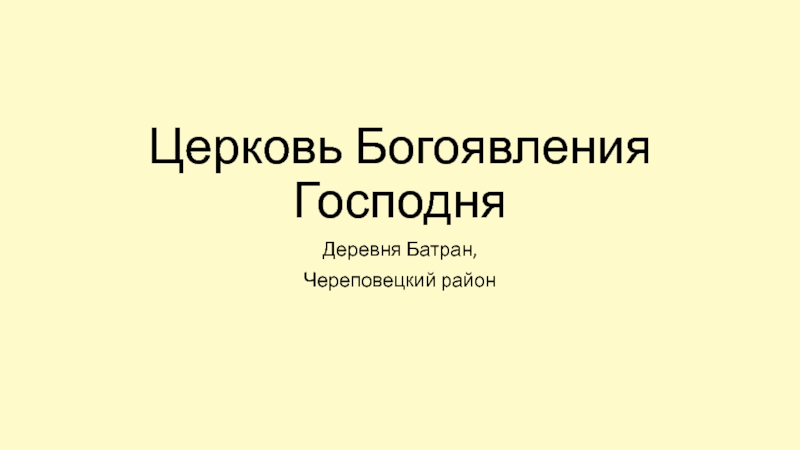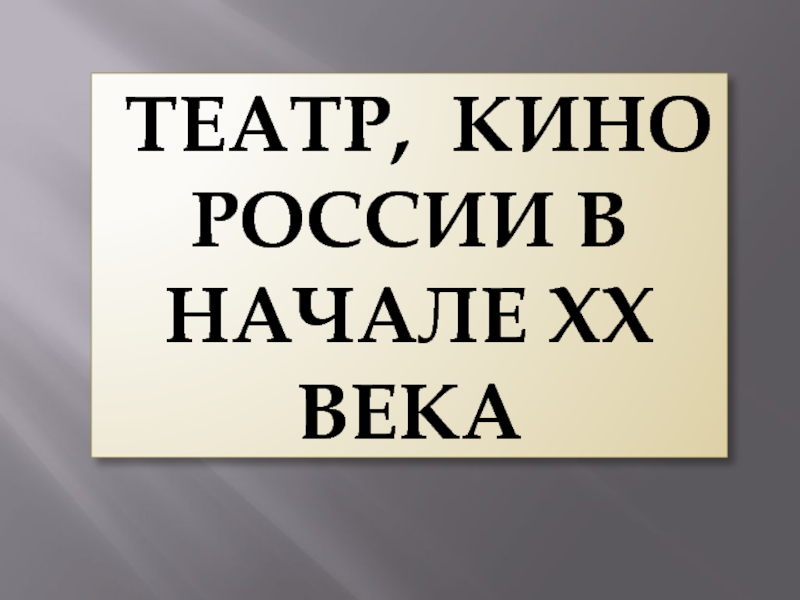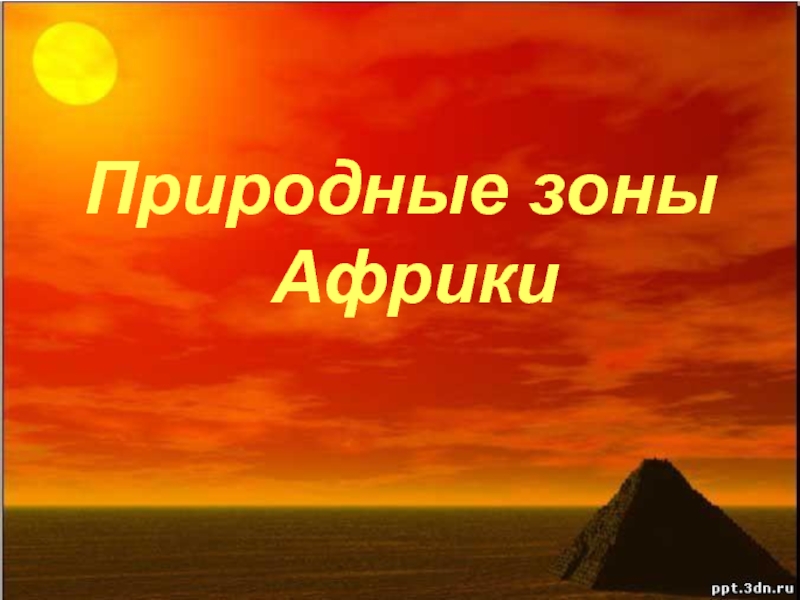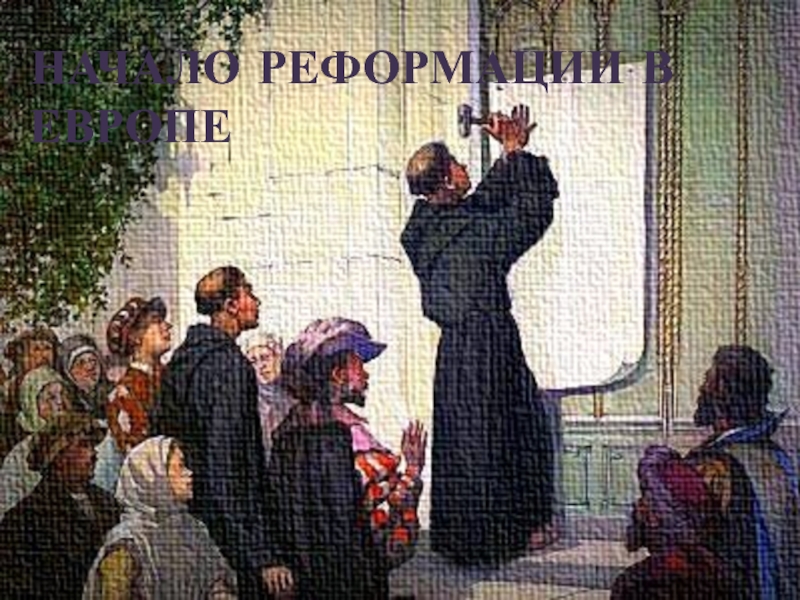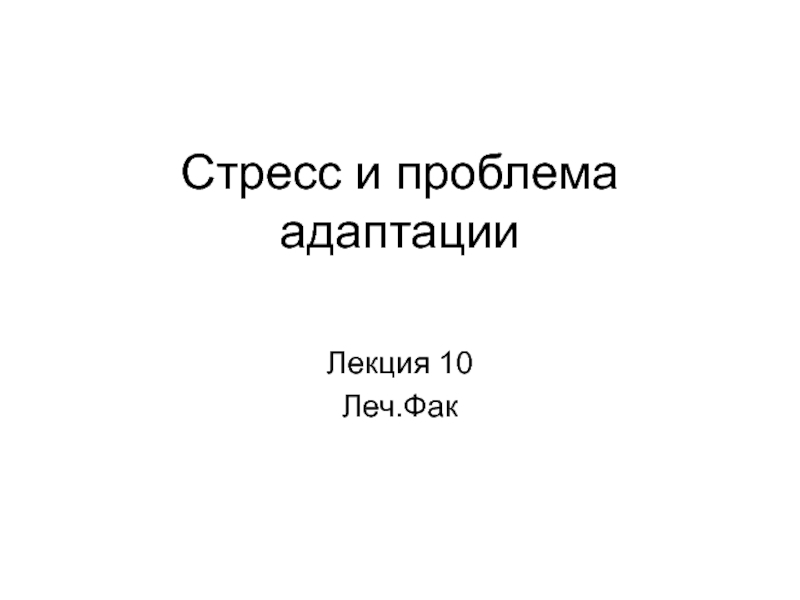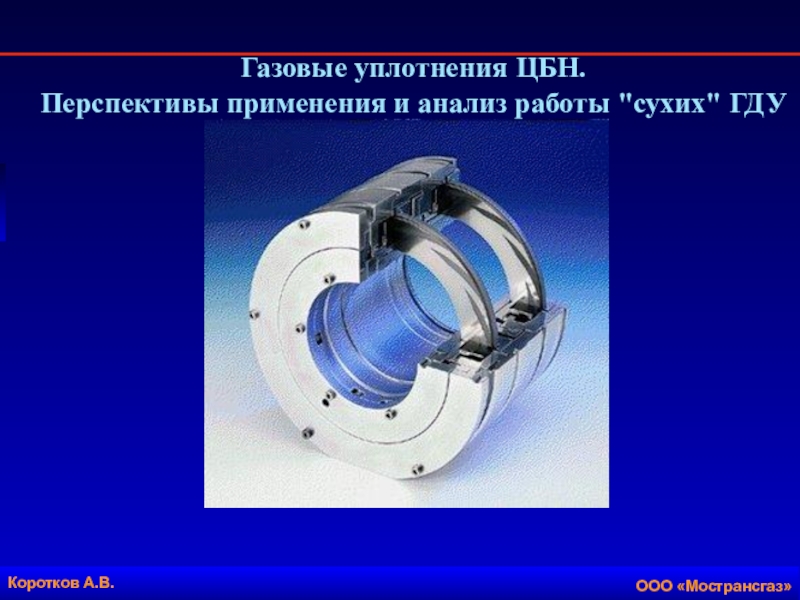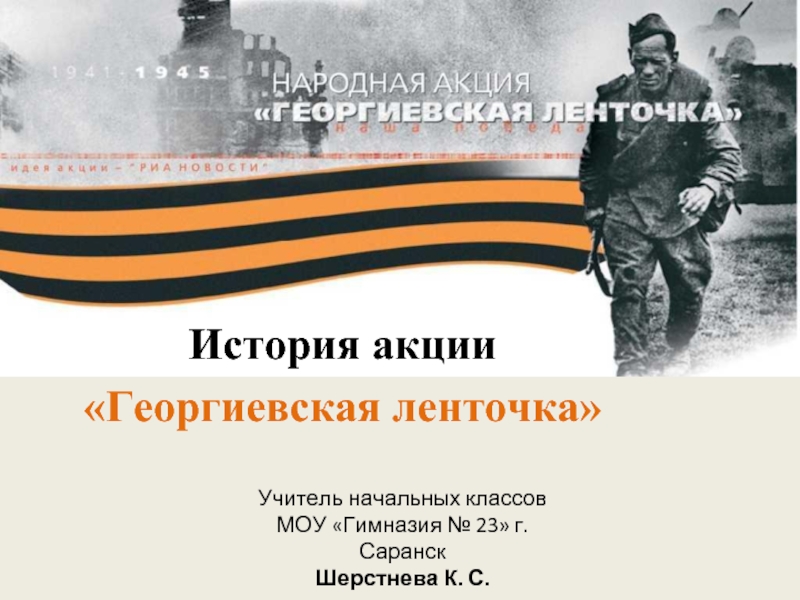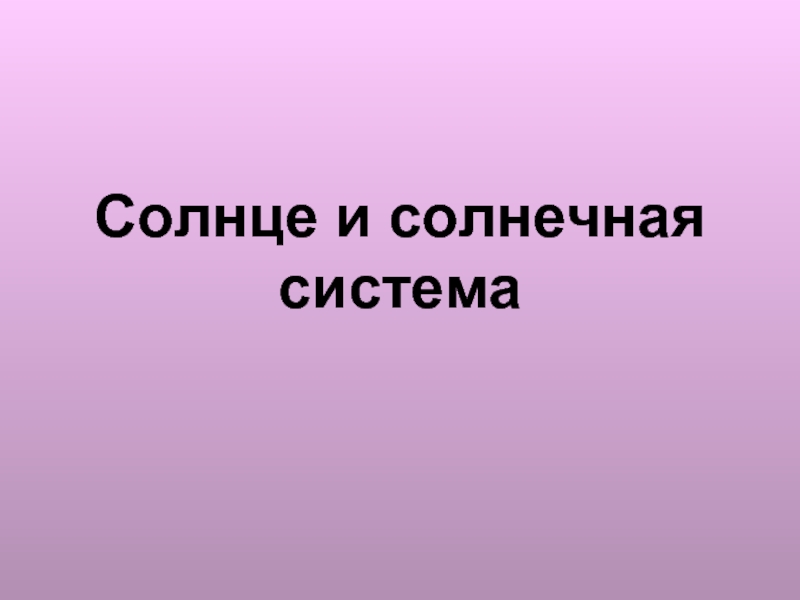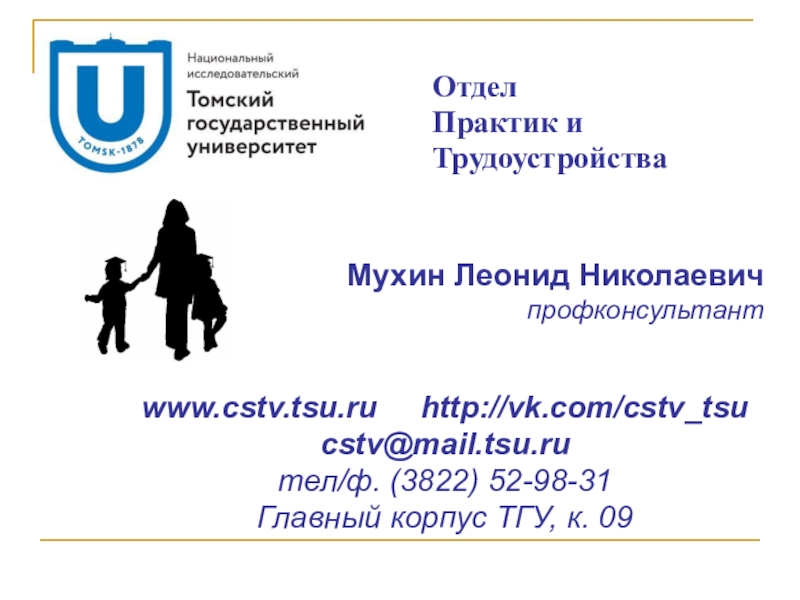Разделы презентаций
- Разное
- Английский язык
- Астрономия
- Алгебра
- Биология
- География
- Геометрия
- Детские презентации
- Информатика
- История
- Литература
- Математика
- Медицина
- Менеджмент
- Музыка
- МХК
- Немецкий язык
- ОБЖ
- Обществознание
- Окружающий мир
- Педагогика
- Русский язык
- Технология
- Физика
- Философия
- Химия
- Шаблоны, картинки для презентаций
- Экология
- Экономика
- Юриспруденция
Modern U.S. political party system
Содержание
- 1. Modern U.S. political party system
- 2. Modern U.S. political party systemThe modern political
- 3. Democratic PartyDemocratic PartyThe Democratic Party is one
- 4. Democratic PartyIn 2004, it was the largest
- 5. Republican PartyThe Republican Party is one of
- 6. Republican PartyFormer President George W. Bush is
- 7. Major third partiesConstitution PartyGreen PartyLibertarian Party
- 8. Constitution PartyThe Constitution Party is a conservative
- 9. Constitution PartyThe Constitution Party advocates a platform
- 10. Green PartyIn the United States, the Green
- 11. Green PartyThe Green Party in the United
- 12. Libertarian PartyThe Libertarian Party was founded on
- 13. Other partiesBesides the Constitution, Green and Libertarian
- 14. IndependentsSome political candidates, and many voters, choose
- 15. Party comparisonsThe following table lists some political
- 16. Party comparisons
- 17. Скачать презентанцию
Modern U.S. political party systemThe modern political party system in the U.S. is a two-party system dominated by the Democratic Party and the Republican Party. These two parties have won every
Слайды и текст этой презентации
Слайд 3Democratic Party
Democratic Party
The Democratic Party is one of two major
political parties in the U.S. It is the oldest political
party in the world.The Democratic Party, since the division of the Republican Party in the election of 1912, has positioned itself as the party of labor on economic issues. The economic philosophy of Franklin D. Roosevelt, which has strongly influenced American liberalism, has shaped much of the party's agenda since 1932. Roosevelt's New Deal coalition had controlled the White House until 1968 with the exception of Eisenhower 1953-1961.
Слайд 4Democratic Party
In 2004, it was the largest political party, with
72 million voters (42.6% of 169 million registered) claiming affiliation.
The president of the United States, Barack Obama, is the 15th Democrat to hold the office, and since the 2006 midterm elections, the Democratic Party is the majority party for the United States Senate.A 2011 USA Today review of state voter rolls indicates that registered Democrats declined in 25 of 28 states (some states do not register voters by party). Democrats were still the largest political party with more than 42 million voters (compared with 30 million Republicans and 24 million independents). But in 2011 Democrats numbers shrank 800,000, and from 2008 they were down by 1.7 million, or 3.9%.
Слайд 5Republican Party
The Republican Party is one of the two major
contemporary political parties in the United States of America. Since
the 1880s it has been nicknamed (by the media) the "Grand Old Party" or GOP.Founded in 1854 by Northern anti-slavery activists and modernizers, the Republican Party rose to prominence in 1860 with the election of Abraham Lincoln, who used the party machinery to support victory in the American Civil War. The GOP dominated national politics during the Third Party System, from 1854 to 1896, and the Fourth Party System from 1896 to 1932. Today, the Republican Party supports an American conservative platform, with further foundations in economic liberalism, fiscal conservatism, and social conservatism.
Слайд 6Republican Party
Former President George W. Bush is the 19th Republican
to hold that office. The party's nominee for President of
the United States in the 2012 presidential election was Mitt Romney, former Governor of Massachusetts. Since the 2010 midterm elections, the Republicans have held a majority in the United States House of Representatives.USA Today's review of state voter rolls indicates that registered Republicans declined in 21 of 28 states (not all states register voters by party) and that Republican registrations were down 350,000 in 2011. The number of independents rose in 18 states, increasing by 325,000 in 2011, and was up more than 400,000 from 2008, or 1.7%.
Слайд 8Constitution Party
The Constitution Party is a conservative United States political
party. It was founded as the U.S. Taxpayers Party in
1992. The party's official name was changed to the Constitution Party in 1999; however, some state affiliate parties are known under different names.According to ballot access expert Richard Winger, the editor of Ballot Access News, who periodically compiles and analyzes voter registration statistics as reported by state voter agencies, it ranks third nationally amongst all United States political parties in registered voters, with 438,222 registered members as of October 2008. This makes it currently the largest third party in the United States.
Слайд 9Constitution Party
The Constitution Party advocates a platform that they believe
reflects the Founding Fathers' original intent of the U.S. Constitution,
principles found in the U.S. Declaration of Independence, and morals taken from the Bible.In 2006, Rick Jore of Montana became the first Constitution Party candidate elected to a state-level office, though the Constitution Party of Montana had disaffiliated itself from the national party a short time before the election.
The Constitution Party's 2012 presidential nominee was Virgil Goode
Слайд 10Green Party
In the United States, the Green Party has been
active as a third party since the 1980s. The party
first gained widespread public attention during Ralph Nader's second presidential run in 2000. Currently, the primary national Green Party organization in the U.S. is the Green Party of the United States, which has eclipsed the earlier Greens/Green Party USA.Слайд 11Green Party
The Green Party in the United States has won
elected office mostly at the local level; most winners of
public office in the United States who are considered Greens have won nonpartisan-ballot elections (that is, elections in which the candidates' party affiliations were not printed on the ballot). In 2005, the Party had 305,000 registered members in the District of Columbia and 20 states that allow party registration. During the 2006 elections the party had ballot access in 31 statesGreens emphasize environmentalism, non-hierarchical participatory democracy, social justice, respect for diversity, peace and nonviolence.
The 2012 Green Party presidential nominee was Jill Stein.
Слайд 12Libertarian Party
The Libertarian Party was founded on December 11, 1971.
It is one of the largest continuing third parties in
the United States, claiming more than 200,000 registered voters and more than 600 people in public office, including mayors, county executives, county-council members, school-board members, and other local officials. It has more people in office than all other minor parties combined.The 2012 Libertarian Party nominee for United States President was former New Mexico governor, Gary Johnson.
